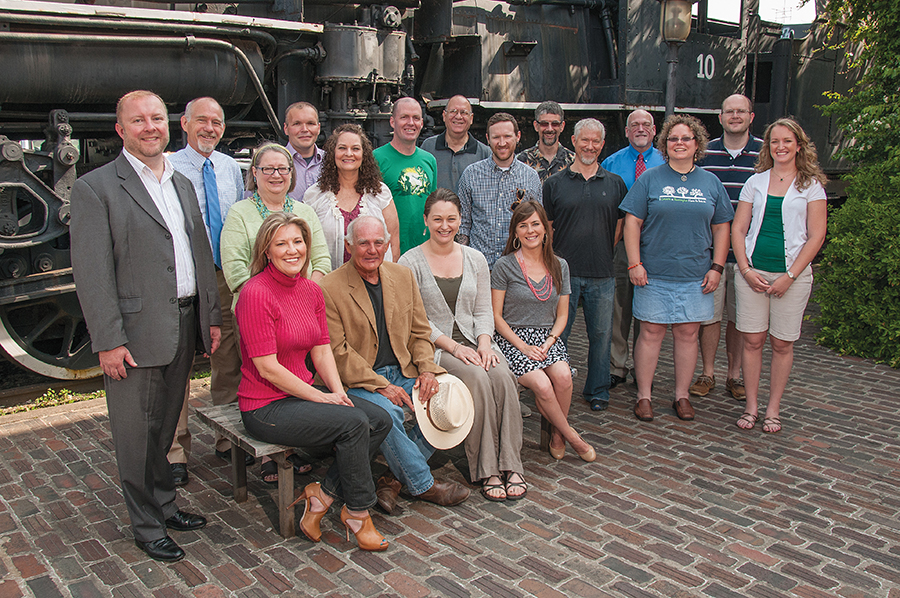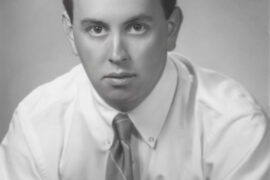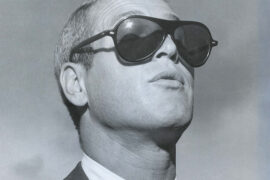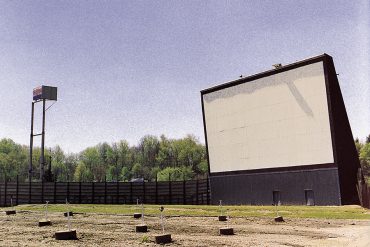By Anna Lafferre
HQ 82 | SUMMER 2013
For Anne Durham, it all started with a pot of flowers.
In early 2006, Durham looked around the mayor’s office at City Hall into the faces of a diverse group of Huntingtonians and asked one question that would alter Huntington’s future permanently: In five years, if our city is prosperous, what will that look like? Expecting to hear “new businesses” or “clean streets,” Durham was surprised when someone piped up: “Well, I’d like to see some flowers in the flowerpot outside City Hall.”
“So I said ‘okay,’” Durham recalls. “If a pot of flowers is as far as we can go, then great. The amazing thing is, about three weeks after that meeting, a volunteer came and put flowers in those flowerpots. And that’s what had to happen first.”
Durham – along with then-banker Ostie Mathisen, Huntington’s Director of Administration and Finance Brandi Jacobs-Jones, then-Mayor David Felinton and Marshall University President Dr. Stephen Kopp – had been facilitating focus groups around the city on topics such as family life, economic development and arts and culture, asking for citizen input on the future of Huntington. Little did they know at the time that those dialogues – and that simple request for flowers – would birth a movement now known as Create Huntington.
The people who associate themselves with Create Huntington describe it as a “movement” in the community and not an organization. Create Huntington has no official members; simply by being a citizen of Huntington one is a “member.” Create Huntington’s goal is all about facilitating and helping other people accomplish the things that are really important to them, according to Thomas McChesney, marketing director at law firm Huddleston Bolen.
“It’s entirely about creating ways in which people can safely articulate the kinds of things they’d like to see in Huntington to improve their quality of life, then enabling them to go and make it happen,” McChesney says.
The initial founders of Create Huntington – Durham, Mathisen and Jacobs-Jones – had come to the realization that things in Huntington were about as bad as they could get, McChesney explains.
“The methods we had been following for a few decades to improve Huntington had not had the desired result,” he recalls. “They wanted to try something completely different.”
At the time Mathisen sat on many boards of directors for various organizations around town. David Felinton was the mayor, and Mathisen was frustrated he couldn’t get the boards to work with the city and the city to work with the organizations, so he stepped in to do something about it.
“The feeling I got was that there were people who agreed the city had problems but just wanted to write it off until we got a new mayor,” Mathisen recalls. “That was the mindset of the town, not just one person. I realized we’ve got to change the way we think.”

He decided to call his friend Anne Durham, whom he describes as “the best mind I know.” Mathisen and Durham sat down with Felinton and asked what he would do to improve the city if it were solely up to him.
“He said, ‘I saw Richard Florida speak at a conference about creative communities, and I’d really like to do that,’” Durham recalls. “And that was really the starting point.”
Florida is a well-known social and economic theorist whose books on the “creative class,” focusing on issues relating to urban renewal and talent migration, have gained widespread attention. Along with holding focus groups, Durham and Jacobs-Jones applied for a grant from the Benedum Foundation to create a strategic plan for Huntington’s future. Benedum awards grants in West Virginia and southwestern Pennsylvania in the areas of education, economic development, community development and health and human services. Durham and Jacobs-Jones received the grant, and a group called Collective Impact, which provides strategies and solutions to help communities thrive, was hired to help facilitate the process. Public meetings were held, and anyone who wanted to be involved could be involved, says Phoebe Randolph, an architect with Edward Tucker Architects, who has been with the Create Huntington movement since its early days.
“The plan was great, but it was more about the process than it was the results,” Randolph says. “It was about getting people to work together; it was about changing people’s mindsets. It was about asking the question, ‘What do you want our city to be?’ That process, to me, was incredibly valuable.”
New ideas and opportunities were popping up elsewhere in Huntington. The city had just learned that Warner Brothers planned to shoot its film “We Are Marshall” in Huntington. In addition, Byron Clercx, then-director of the School of Art and Design at Marshall, gave an inspiring talk on how public art and a sense of place could transform how people see a community. McChesney and his wife, Stacy, were present for Clercx’s talk.
“Stacy didn’t know this guy at all, but she ran down after the talk and gave him a hug,” McChesney recalls. “He gave us that hook into the larger community.”
Durham acknowledges that the conditions in Huntington at the time created a “perfect storm” in which Create Huntington could flourish.
“We were fortunate in that we were able to ride the perfect storm,” Durham says. “We got the Benedum grant when we did, the Marshall movie came when it did – it really made everyone start thinking differently. The arrival of Dr. Kopp and Byron Clercx at that time – we got really lucky.”
In 2008 the finalized strategic plan was presented to a group of community members and leaders. Jacobs-Jones brought in internationally known sociologist Dr. Vaughn Grisham, director of the George McLean Institute for Community Development, to speak at the meeting. Grisham had done work in West Virginia previously and understood the state and its mindset.
“Vaughn was key because we needed someone from the outside to come in,” Durham says. “Vaughn has tons of credibility and knows how to talk to communities.”
It was Durham’s job to drive Grisham around town and take him to various meetings. She recalls pulling up to his hotel to pick him up the second morning of his visit, and he was in a really grouchy mood.
“I said, ‘Did you not sleep well?’” Durham recalls. “And he said ‘I didn’t sleep at all.’ I was worried there was a problem with the hotel, but then he said ‘I didn’t sleep because I walked through your downtown and looked at all these buildings and the river and everything, and I’m mad because I can’t believe that everyone doesn’t realize what a great thing you have here.’”
This trip was not Grisham’s first to Huntington. He had been in the city many years before and had admired the community.
“When I returned, I was frankly shocked about what had happened in the interim – the loss of population and the downtown,” Grisham says.
Durham drove Grisham to the next meeting where, she says, he got up in front of about 100 people and said something she’ll never forget.

“He said these exact words: ‘Shame on you,’” she recalls. “It was a sobering moment for a lot of people. I still get chills thinking about it.”
The McChesneys were also at that meeting.
“Vaughn got up and told us that his habit when he goes to any town is just to walk around and see what the place is like,” McChesney says. “Then he said, ‘And I am going to tell you something – I gather from walking around your town that no one here loves Huntington.’
“This was positively shocking to a group of people who thought we loved Huntington quite a bit. To hear that and honestly accept that as the truth gave a charge for us to finally get off our duffs and do something.”
In November 2008, a 10-member delegation from Huntington – including Mathisen, Jacobs-Jones and Randolph – traveled to Oxford and Tupelo, Miss., on a trip hosted by Grisham. Tupelo, a town of about 36,000, had found major success in its initiatives to revitalize the community.
“People all over the country had been beating down their door to learn what they did,” Randolph says. “Vaughn saw what we were trying to do here and he organized a whirlwind, three-day series of meetings with all these people in Tupelo and Oxford. He did it just because he was interested and excited about what was happening here in Huntington.”
“I sensed a real passion and community among key people to improve the quality of life in Huntington,” Grisham says. “They were passionate, committed and willing to put their time and money into the effort.”
Soon after the trip to Mississippi, the official Create Huntington movement was born. A board was formed and it was different from the start.
“It wasn’t going to be called a board of directors because no one was directing anybody. It would be a board of connectors,” Durham says. “There was a very important reason we did that – it was part of the mind shift that had to happen. Our board members are not here to boss anyone around. They are here to serve.”
Randolph was selected as the first board president, or chief “connector.”
“We had to be a grassroots organization. If you try to start at the top, where everyone thinks it makes sense to start, you don’t get anywhere,” Randolph says. “Until you have that grassroots swell of support, you can’t really do anything. It has to come from the people who live here.”
Mathisen echoes that statement.
“Create Huntington is the result of many, many different people,” he says. “They all tied into a community vision and no one took credit.”
Like Batman, Create Huntington is both everywhere and nowhere. Create Huntington does not do projects itself; instead, it is responsible for bringing people together, encouraging them to become civically engaged and work on projects important to them. “It gives a voice to those who want to be involved,” says Brandi Jacobs-Jones. “It helps individuals who have an idea. Prior to Create Huntington there were more obstacles, but now there’s nothing you can’t do.”
If Create Huntington does have one tangible representation, it is the Chat ‘n Chew that is held every Thursday at 5:30 p.m. in the lobby of the Frederick building. It is the brainchild of the McChesneys.

Thomas and Stacy McChesney had been attending many talks where the speakers would hand them a list and say, “Here’s what cool small towns have.” The McChesneys quickly realized Huntington had most of those characteristics.
“When you look at these lists, cities who have been successful are on waterfronts and have good access to rail, road and air transportation,” Thomas McChesney says. “They have a university, major health care systems and a diversified base of employment. They have access to the arts and a vibrant park system. Tell me – what don’t we have? Why are we not where we ought to be?”
One thing the McChesneys realized that Huntington did not have, however, was a place people could go and, with some level of reliability, know they could be around other interesting, creative, engaged people. Richard Florida calls these “third places” – places that are neither home nor work but are venues like coffee shops and bookstores where people go for the interesting company and conversation. Those places usually grow organically, McChesney says, but he and Stacy began wondering if it was possible to manufacture that kind of space. They looked around town and realized the lobby of the Frederick was like “a giant living room.” They asked Mark Cross, owner of 21 at the Frederick restaurant, if they could host meetings there, and Cross said yes.
The Chat ‘n Chew was born.
“The first week we were sorely afraid we’d be overrun by naysayers,” McChesney says, “so we implored the people we knew to come out – and they did. It worked the first week, so we had it the second week.”
The Chat ‘n Chews have few rules, but one thing that is prohibited is negativity.
“Our goal was to be a very safe place where people could offer ideas,” McChesney says. “We strictly prohibit negative comments. If you’re going to complain, you’re going to be immediately challenged to come up with a solution.”
Two ideas that gained life in a Chat ‘n Chew are local foods store The Wild Ramp and River & Rail Bakery, both located in Heritage Station.
“Real-world, life-changing events have come to fruition by Create Huntington,” says Kim Baker, owner of River & Rail Bakery. “About three years ago I became involved with this powerfully positive endeavor. Now my life’s dream of owning a business can be directly attributed to Create Huntington. River and Rail Bakery relied on the expert guidance and friendship gained from peers within this group. The energy I feel from this community is boundless.”
The Chat ‘n Chew caught the attention of Vaughn Grisham who has taken the idea to other communities he’s visited.
“I really respect Thomas and what he’s been able to do with the Chat ‘n Chew,” Grisham says. “I frequently cite Huntington and the Chat ‘n Chew in other states I visit. Huntington is leading the way, not only within the city, but throughout the whole state as well.”
Like Create Huntington, the group Create West Virginia has the goal of building creative communities for the new economy. Because of the momentum of Create Huntington, Create West Virginia held its third annual conference in Huntington.
“We got excited that in Huntington, right now, people are coalescing around these efforts,” says Jeff James, chair of Create West Virginia. “Create Huntington is the biggest and first group of its kind and has been a good mentor to other communities around the state.”
One of the best things about Create Huntington, Randolph says, is that it knows no age, class or economic status.
“One of the things I love about Create Huntington is that it has nothing to do with how much money you have or how much education you have,” she says. “You can be the most powerful lawyer in town or someone who just wants a cleaner, safer neighborhood.”
Create Huntington is, and always has been, about getting people to work together and changing people’s mindsets.
“Like all cities, Huntington faces huge problems,” says Simone Kompanek, who is active in the movement. “If you’re just looking at a problem by yourself, you feel like this is never going to happen, this is never going to change. But it’s different when you’re in a roomful of people or you’re emailing people who are saying ‘I had the same idea!’ Something that seemed huge, when split among 100 people, doesn’t seem that bad.”
For Huntingtonians who feel the city’s problems are overwhelming, Durham suggests finding the thing that bothers them the most and starting there. A lot of Create Huntington volunteers began their involvement by deciding they were going to take responsibility for closing the meth house down the street or help a neighbor in need, she says.
“The first thing I always tell people is to find what makes you mad about the city. That’s where you start,” she says. “If it’s potholes that make you mad, that’s where you start. If it’s the empty building down the street that people have been breaking into, that’s where you start. Whatever irritates you is irritating you for a reason. That’s your community calling out for help, and you need to pay attention to that.”
Create Huntington volunteers acknowledge that Huntington has come a long way but still has a long way to go. Board member Jessica Pressman, whose father Tom is also an active member in the movement, says it’s important that Create Huntington is always changing and always recreating itself.
“We are working on refocusing our energy. We had so much success early on and we are deciding where we go next,” she says. “We’re asking, ‘What does Huntington need us to do?’ All of Huntington needs to decide where we go from here.”
Durham believes that one major topic left for Create Huntington to tackle is the economy. She calls it “the elephant in the room that’s hard to talk about.”
“All that we’re doing is definitely leading towards something that’s going to help us address that big issue,” she says. “You have to have the faith to keep moving forward, not knowing what that’s going to look like. It’s going to be the next big thing to make Huntington the city we know it can be.”
One thing is certain – there is no job too big or too small for Create Huntington. From recycling and planting flowers to helping create a local foods store and a bakery, Create Huntington volunteers have tackled many issues. Durham, who works at the American Foundation for the Blind, says she often hosts colleagues from New York here in Huntington. One day, she and a colleague were walking through a parking lot and saw that someone had thrown McDonald’s trash on the ground.
“I picked it up to throw it away, and I didn’t miss a beat,” Durham says. “And he said, ‘Don’t you have anybody to do that?’ and I said ‘We have me!’ That’s the way everybody starts to think now. This is my community. This trash is my problem; it’s not somebody else’s problem.”
No matter what interests or concerns you about Huntington, all of the Create Huntington volunteers agree that the important thing is you just get involved.
“As long as people have the same vision for the community, they can do the project they care about using their own talents and passions,” Durham says. “It’s all contributing and it’s all helping and it’s all pushing us forward.”




